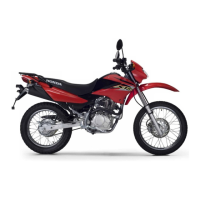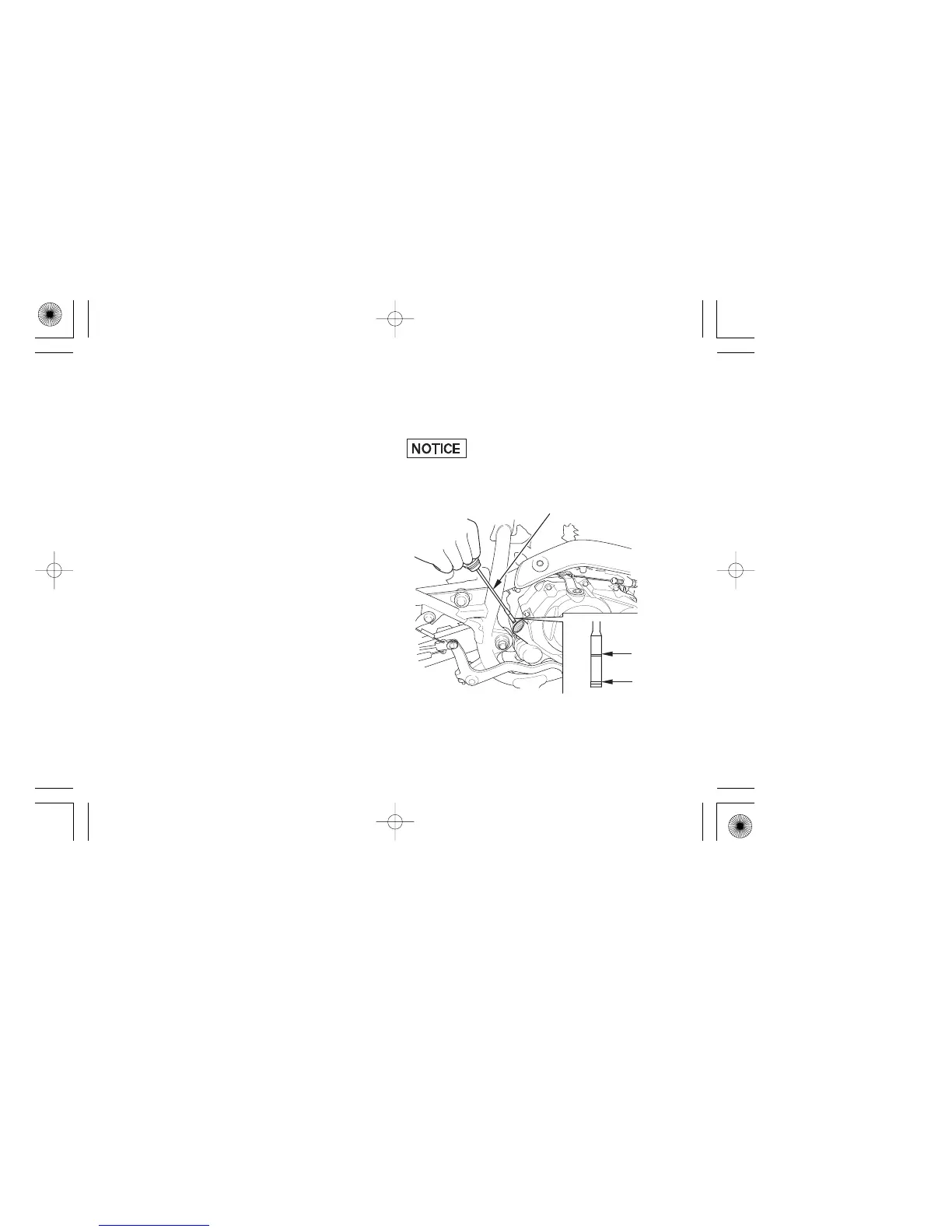
 Loading...
Loading...
Do you have a question about the Honda XR125L and is the answer not in the manual?
| Compression Ratio | 9.2:1 |
|---|---|
| Transmission | 5-speed |
| Fuel System | Carburetor |
| Front Suspension | Telescopic fork |
| Front Brake | Single disc |
| Rear Brake | Drum |
| Front Tire | 90/90-19 |
| Rear Tire | 110/90-17 |
| Ignition | CDI |
| Final Drive | Chain |
| Engine Type | Air-cooled 4-stroke single-cylinder OHC |
| Bore x Stroke | 56.5 mm x 49.5 mm |
| Rear Suspension | Swingarm with single shock |
| Fuel Capacity | 12 L |
| Max. Torque | 10.4 Nm @ 6, 500 rpm |
Safety labels are placed on the motorcycle.
Messages preceded by alert symbols and signal words (DANGER, WARNING, CAUTION).
Explains safety headings, sections, and instructions with signal words.
General safety recommendations for riding.
Emphasizes the importance of wearing a helmet.
Warning against combining alcohol and motorcycle riding.
Tips for improving visibility to other road users.
Advice on identifying and reacting to off-road terrain dangers.
Importance of not exceeding personal riding abilities.
Necessity of proper motorcycle maintenance for safety.
Detailed advice on choosing helmets and eye protection.
Recommendations for specialized riding gear for different conditions.
Information on how to safely load the motorcycle.
Specific weight capacities and tips for carrying cargo.
Recommendations for using Honda Genuine Accessories and general guidelines.
Warnings against modifying original equipment for safety reasons.
Front and rear brake system operation and checks.
Clutch adjustment and operation procedures.
Function and positions of the ignition switch.
Operation of engine stop and starter buttons.
Controls on the left handlebar, including lights, horn, and turn signals.
How to lock and unlock the motorcycle's steering.
Location and use of the helmet holder.
Instructions for removing and installing side covers.
Procedures for removing and installing the seat.
Location and purpose of the document compartment.
How to adjust the vertical aim of the headlight.
Essential checks before riding the motorcycle for safety.
Procedures for starting the motorcycle engine under various conditions.
Recommendations for the initial break-in period of the motorcycle.
How to operate the motorcycle, including shifting and braking.
Techniques and safety reminders for using the motorcycle's brakes.
Proper procedures for parking the motorcycle safely.
Advice on preventing motorcycle theft.
Explains why regular maintenance is crucial for safety and performance.
Critical safety precautions to follow during maintenance tasks.
General safety advice for performing motorcycle maintenance.
Recommended service intervals and tasks for the motorcycle.
Contents of the motorcycle's onboard tool kit.
Location of frame and engine serial numbers for reference.
Location of the colour label for ordering parts.
Procedure for cleaning or replacing the air cleaner element.
Maintenance procedure for the crankcase breather system.
Engine oil level check, oil type, and oil strainer screen maintenance.
Inspection and replacement of the spark plug.
How to check and adjust throttle grip freeplay.
Procedure for adjusting the engine's idle speed.
Inspection, adjustment, lubrication, and cleaning of the drive chain.
Checking and replacing the drive chain slider.
How to inspect fork, swingarm bearings, and suspension fasteners.
Functional checks and maintenance of the side stand.
Step-by-step guide for removing the front and rear wheels.
How to check front brake pad wear and when to replace them.
How to check rear brake shoe wear using the indicator.
Information on the maintenance-free battery type and warnings.
How to replace blown fuses and related warnings.
Procedure for adjusting the brakelight switch timing.
Instructions for replacing various motorcycle bulbs.
Procedure for replacing the headlight bulb.
Procedure for replacing the position light bulb.
Procedure for replacing the brake and tail light bulb.
Procedure for replacing turn signal bulbs.
Procedure for replacing the license plate light bulb.
Steps for safely washing and cleaning the motorcycle.
Advice on polishing, waxing, and removing road salt.
Steps for preparing the motorcycle for extended storage.
Procedures for taking the motorcycle out of storage.
Actions to take after a motorcycle crash for safety and inspection.
Physical measurements of the motorcycle.
Fuel, oil, and passenger capacity details.
Technical engine specifications like bore, stroke, and spark plug type.
Specifications for caster, trail, and tyre sizes.
Gear ratios and primary/final reduction details.
Specifications for battery, alternator, lights, and fuses.